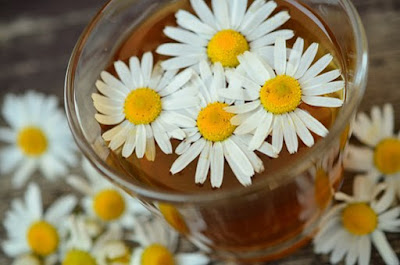Scientific names and their common names:
Stellaria media (Common chickweed)
Stellaria pubera (Star chickweed)
Cerastium vulgatum (Mouse-ear Chickweed)
Description:
Widespread in temperate zones, Chickweed is an herb that grows all year along roadsides, coastal cliffs, riverbanks and lawns. It is a low-growing plant with tiny white flowers and slender delicate stems. Chickweed has pointed oval leaves that folds every night over the tender buds and new shoots thus the term 'Sleep of Plants'. Its flowers bloom between May and July and can be used fresh or dried for later herb use.
Caution: There are similar-looking weeds called Euphorbia maculata which are poisonous. They are spotted spurge with different flowers and white, milky sap. Another weed called Polygonum arenastrum has slender stem with alternate leaves that is singly configured.
Nutrition: Chickweed is very nutritious and is an excellent source of vitamins A, D, B complex, C, and minerals like iron, calcium, potassium, phosphorus, zinc, manganese, sodium, silica, copper and selenium.
Chickweeds' stems, leaves and flowers are edible and make a tasty addition to salads or cook them like spinach. They, by the way, resemble the taste of spinach. It can also be added in lasagna and chickweeds are in fact a component of a cream cheese spread.
For the Mouse-ear chickweed variety, one needs to cook this because it's so hairy.
Medicinal properties and indications:
The major plant constituents in Chickweed are coumarins, oleic-acid, genistein, hentriacontanol, flavonoids, rutin and triterpenoid saponins.
The omega-6 fatty acid gamma-linolenic acid is also found in chickweed which is essential for skin and hair growth, reproductive system, bone health and helps reduce inflammation.
Chickweed is used in alternative medicine as a laxative, astringent, carminative, diuretic (but won't deplete the body of minerals), expectorant, vulnerary, galactogogue, emmenagogue and is a remedy for obesity. Because of its mucilage content, chickweed also has demulcent properties that soothe the mucous membranes.
As an Infusion:
How to prepare an Infusion:
In 1 cup boiling water
Add 1 Tablespoons dried herb or 2 Tablespoon fresh leaves
Steep for 10 min
Used to treat asthma, bronchitis, coughs and hoarseness.
Beneficial in the treatment of kidney complaints, UIT, cystitis
As a decoction:
It is used for post-partum depurative, galactogogue, emmenagogue, and circulatory tonic. It is also used to relieve constipation.
Externally it is used to treat rheumatic pains, wounds and ulcers.
As a Poultice (finely chopped chickweed): relieves any kind of roseola, skin irritation, minor burns, rashes, eczema. Chickweed is an effective antihistamine.
THOUGH THE CONTENT OF THIS BLOG HAD BEEN TRIED/TESTED AND HAD BEEN USED
AS FOLK/HERBAL MEDICINE IT IS STILL BEST TO CONSULT YOUR DOCTOR BEFORE
TRYING THIS. AVOID SELF-DIAGNOSIS AND SELF-MEDICATION.























